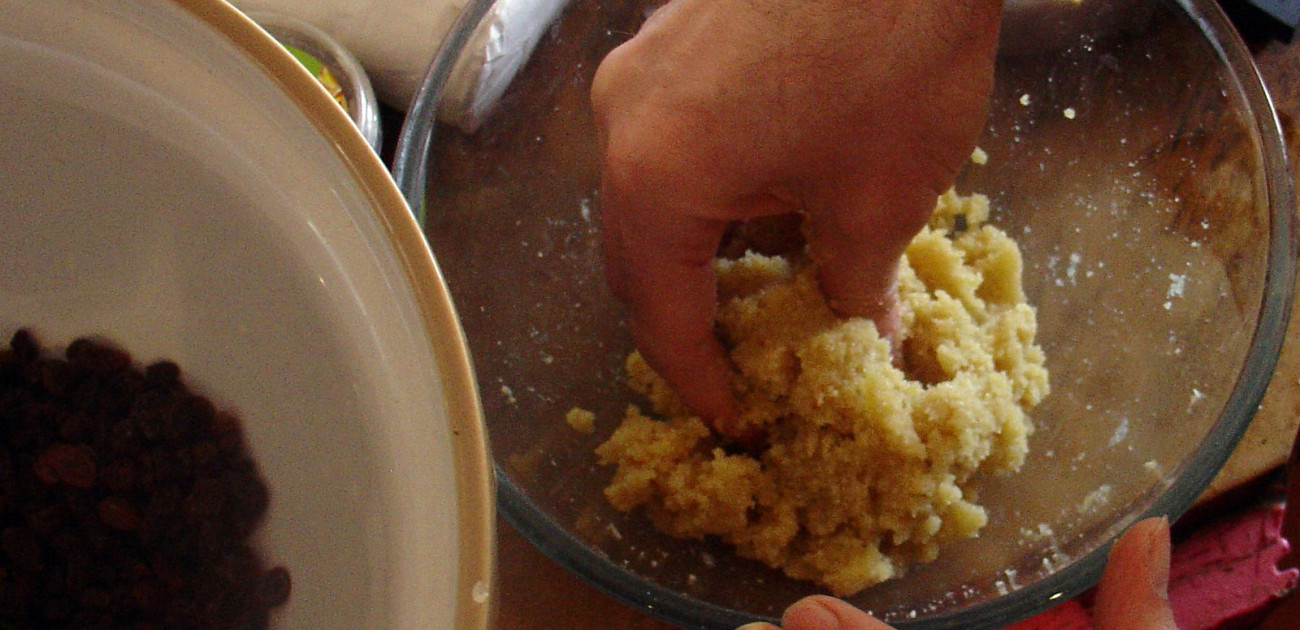14 March 2010
Recipe for Simnel Cake

Today is Mother's Day and what a glorious sunny, Spring day it has been. We gave Sophie a gorgeous bouquet of flowers - white roses, lilies and greenery - and went to church for a Mothers' Day Service, a bit of a rarity for me. I liked the sentiment which was that mother's always have time for a smile for their children however exasperating, painful and annoying we can all be. So thank you Mothers and Mums everywhere for being so tolerant, caring and loving.
Traditionally in Britain, today the fourth Sunday on Lent was the first day that girls in service at the big, posh houses of the gentry were allowed to go home and see their Mothers - this is back in the 17th and 18th centuries. As such, they would bring home a demonstration of their skills learnt at their place of work - a rich and delicious fruit cake that became known as Simnel Cake.
So today used to be called Simnel Sunday and then morphed into Mothering Sunday. Originally, the cakes were decorated with 11 small paste balls, symbolising the 11 faithful disciples of Jesus Christ. These cakes improved with eating and were best enjoyed at the end of the Lenten Fast or Lent and so they became associated with Easter to become the traditional Easter Cake. Simnel Cakes are less often baked than a Christmas Cake but I feel they should be made as much of a tradition as the classic Christmas Cake.
Here's how we made ours today:

Ingredients for the cake:
125g / 4oz butter
125g/ 4oz dark brown muscovado sugar
3 free range organic eggs, beaten (they were discounted in Spar - bargain at 50p a half dozen)
150g / 5oz organic plain flour
¼ tsp salt
½ tsp organic Fairtrade mixed spice
350g / 12oz mixed organic raisins and sultanas (about 200g: 150g respectively)
50g / 2oz mixed chopped peel
Grated rind of lemon (I used orange today as I had no lemon and I am sure it will be fine)
For the marzipan or almond paste:
225g / 80z Fairtrade organic caster sugar
225g / 8oz organic ground almonds
2 eggs beaten
1 teaspoon Steenbergs Natural Almond Extract
To glaze the cake
A little apricot jam
A little beaten egg (just cadge some from making the marzipan as you don't need much)
Prepare an 18cm (7 inch) deep circular cake tin by greasing and lining the base and the sides.
To make the marzipan, mix together the caster sugar, ground almonds, Steenbergs natural almond essence and beaten egg and knead with your hands to a smooth pliable mix. If it feels too gooey, just add a bit more almond and knead some more. Roll out a third of the marzipan - almond paste - into a circle and set aside. Reserve the remainder for topping the cooked cake.

Now put the oven on and preheat to 140oC / 275oF.
To make the cake, cream the butter and muscovado sugar until light and fluffy. Beat in the eggs a little at a time. Sieve together the plain flour, sea salt and Steenbergs mixed spice together and add to the mixture alternately with the dried fruit, mixed peel and grated rind, mixing all the ingredients together.
Put half the mixture into the cake tin, then smooth the top and cover with the circle of almond paste. Add the rest of the cake mixture and smooth the top, hollowing out a small hole in the centre. Bake in the oven for 1½ hours.
When the cake has cooled, brush the top with apricot jam. Now put the oven on and preheat to 180oC / 350oF. Then with the reserved marzipan, roll 11 small balls (for the good disciples and definitely smaller than the massive balls that I made) and then roll out the rest of the almond paste over the top of the cake. Now place the almond paste balls evenly around the edge of the cake. Return the cake to the oven and bake for 10 minutes until the paste has gone slightly brown.

We then put some coloured speckled Easter eggs in the centre. leave for a couple of weeks to mature and then eat and enjoy.




